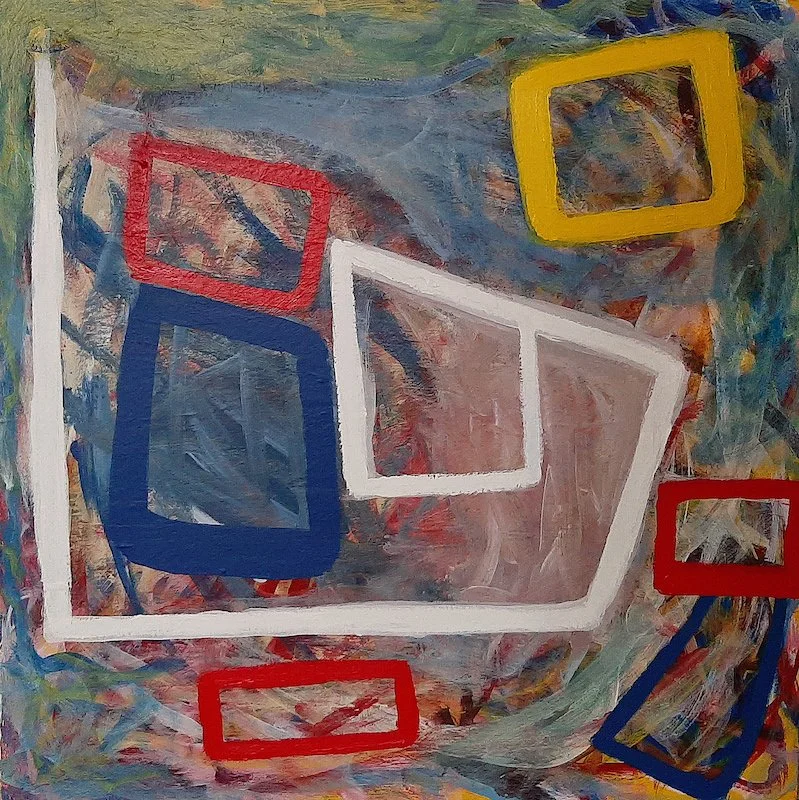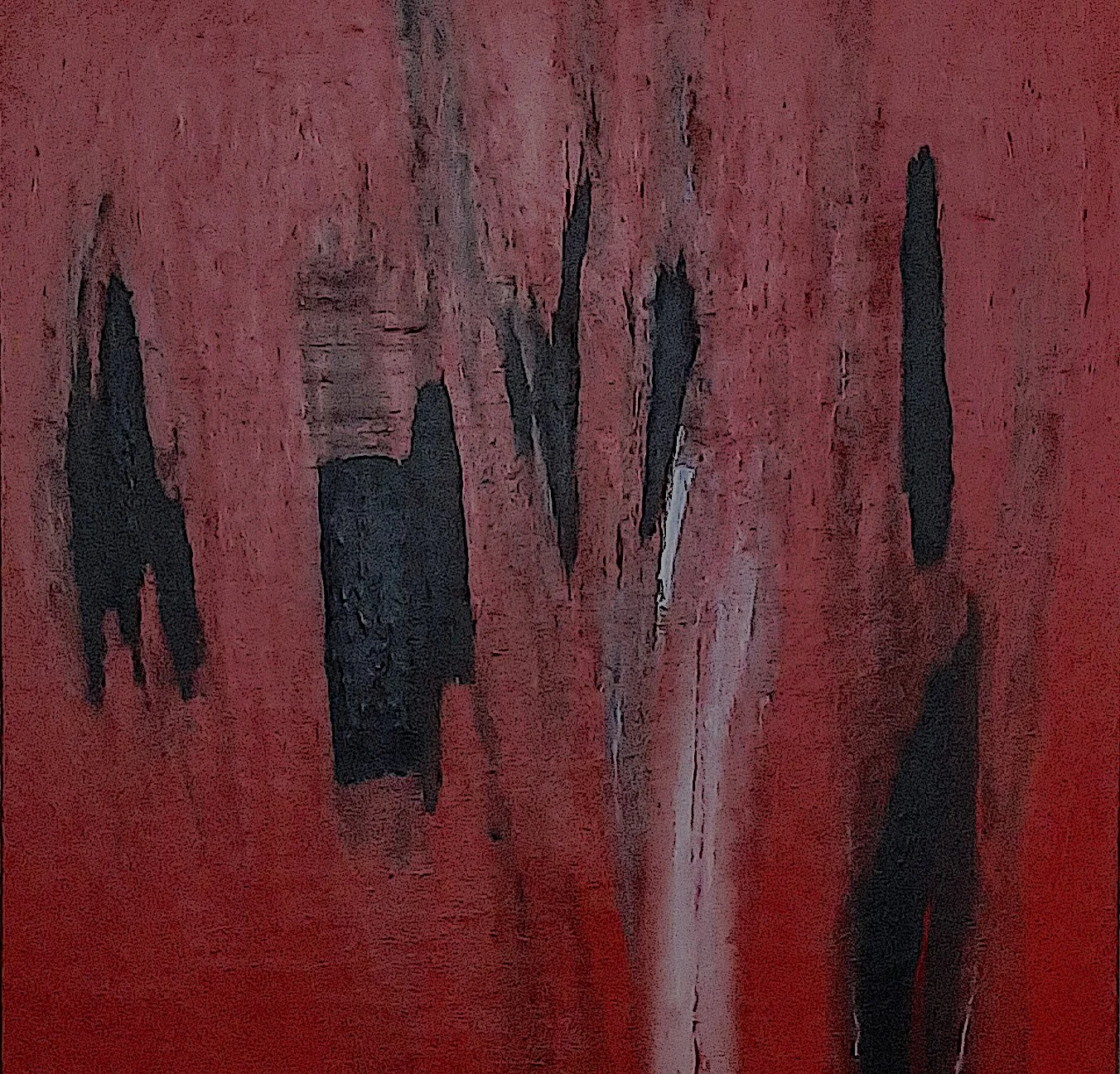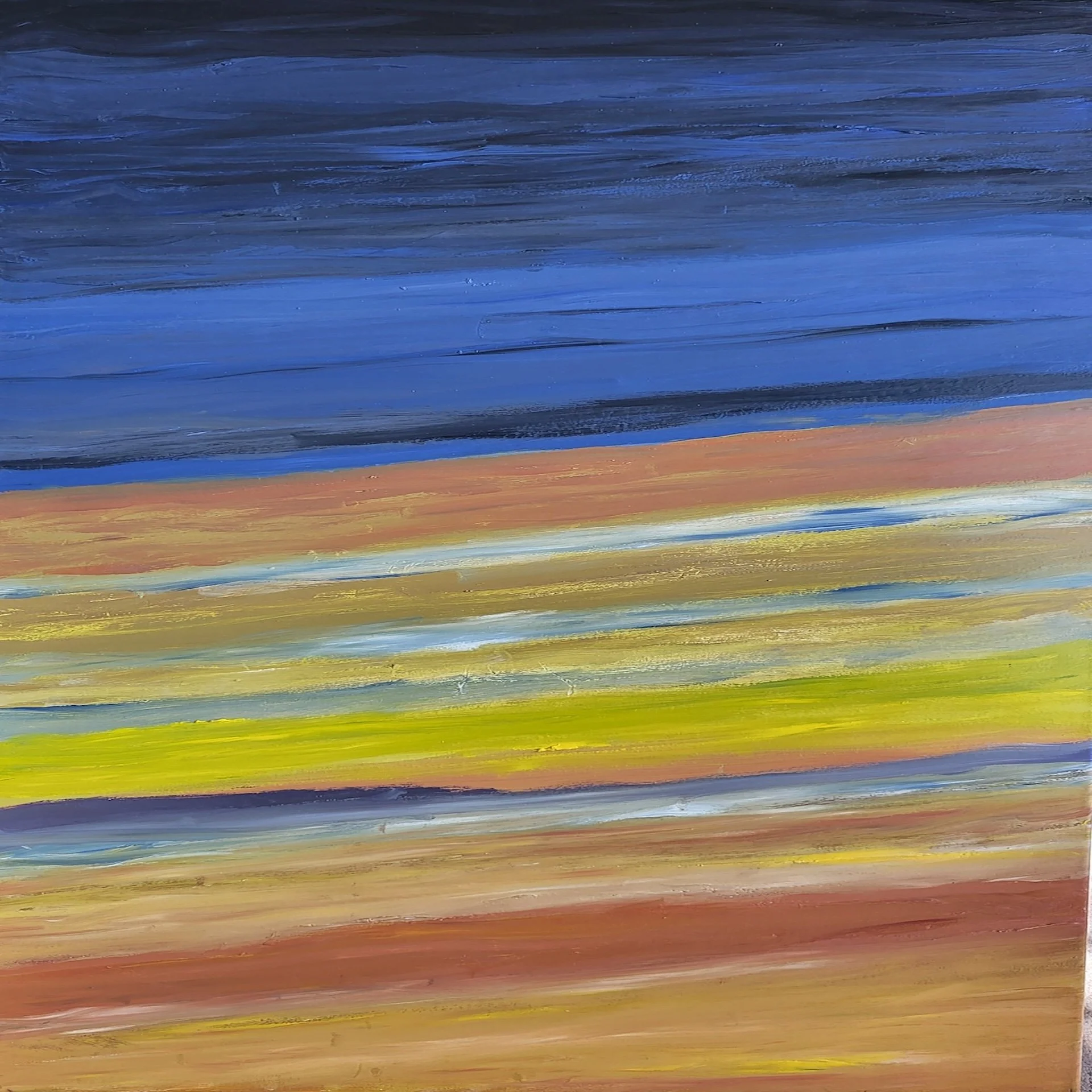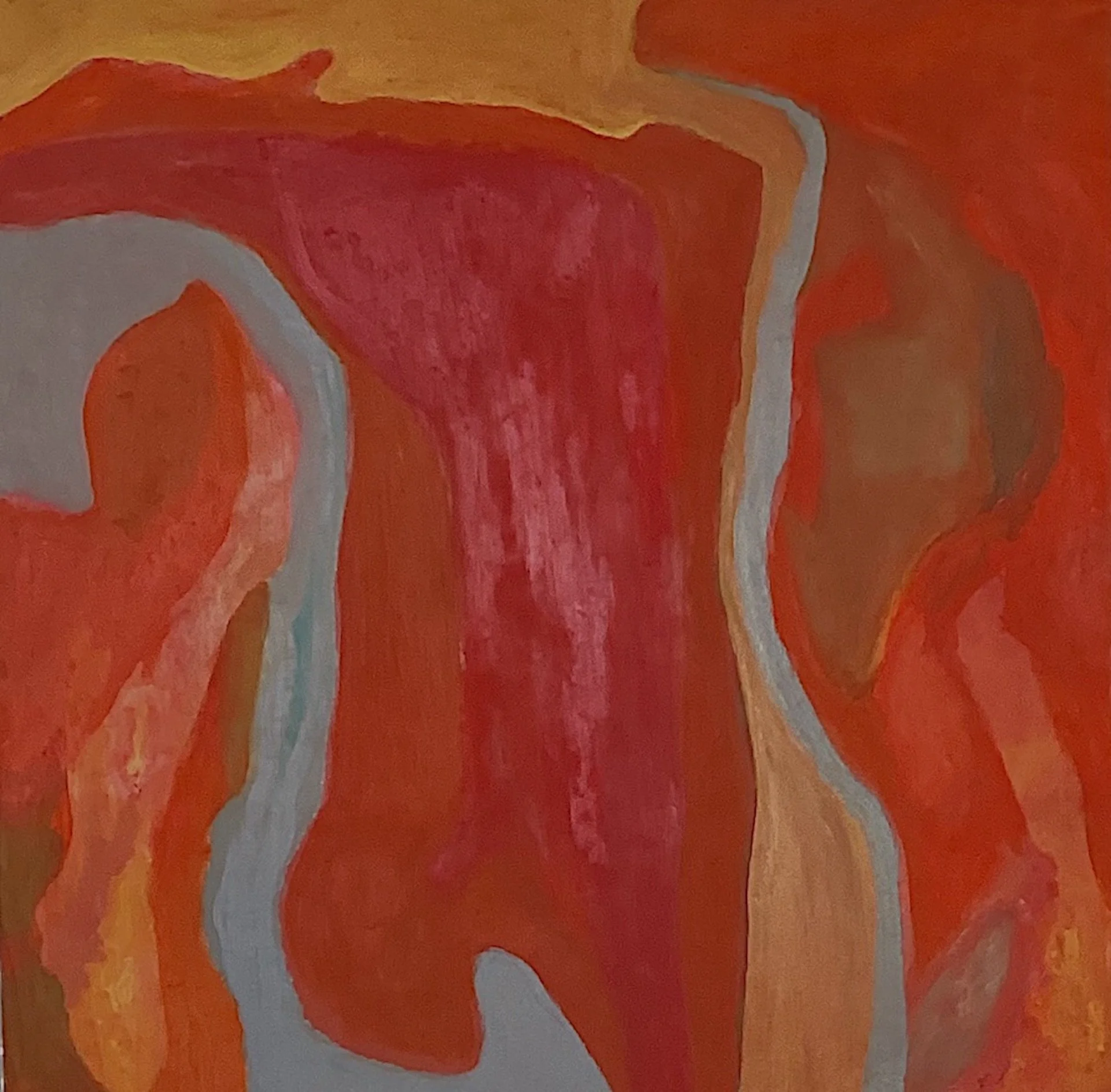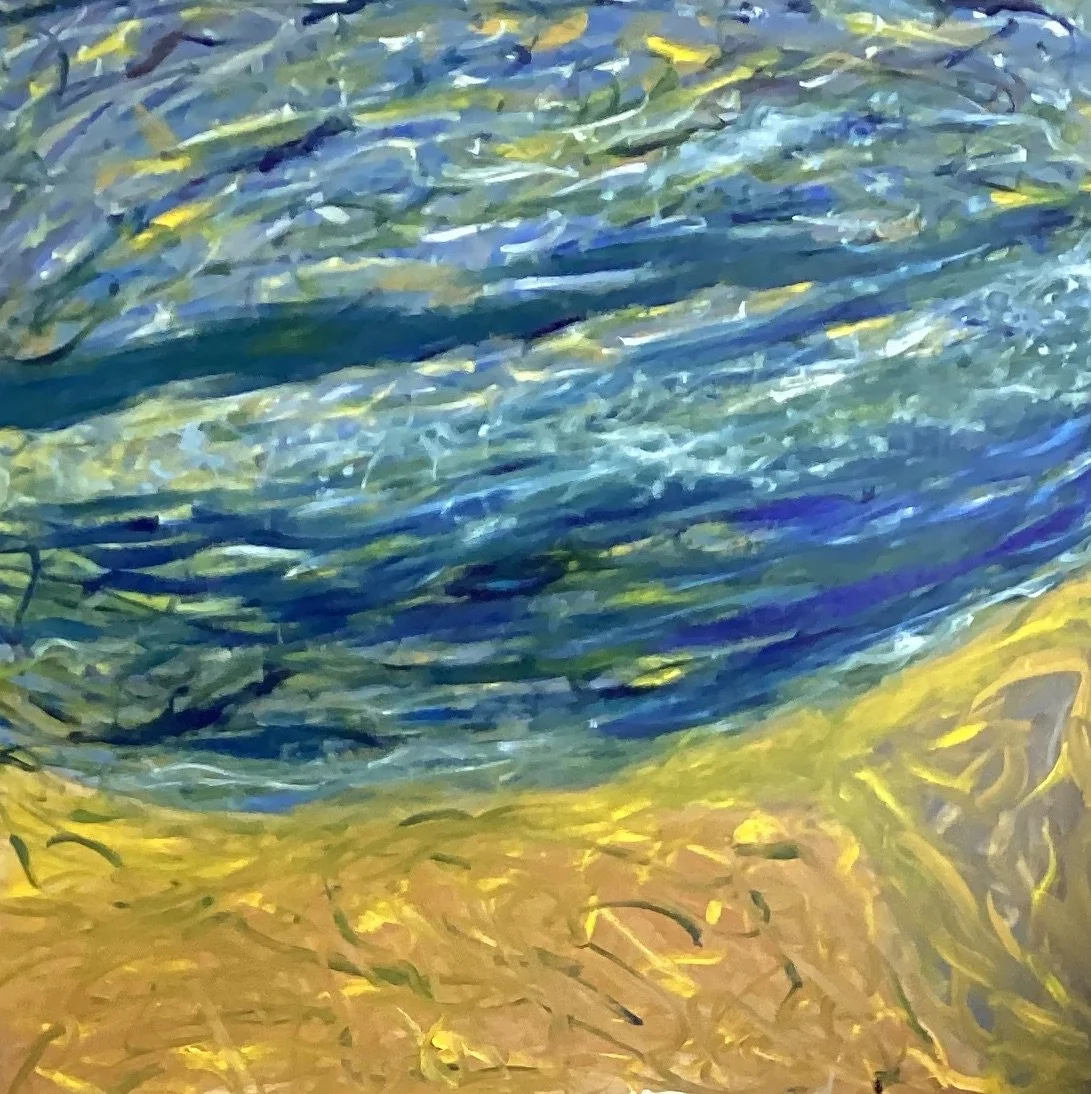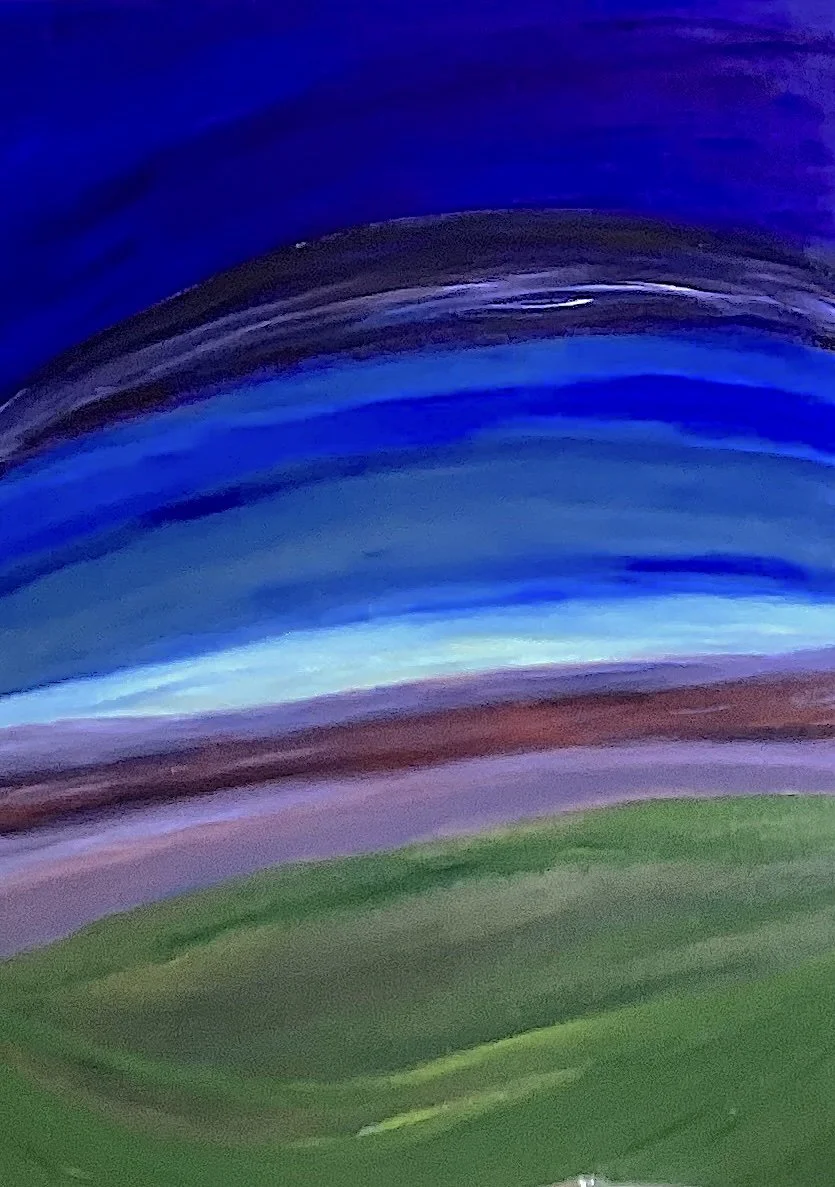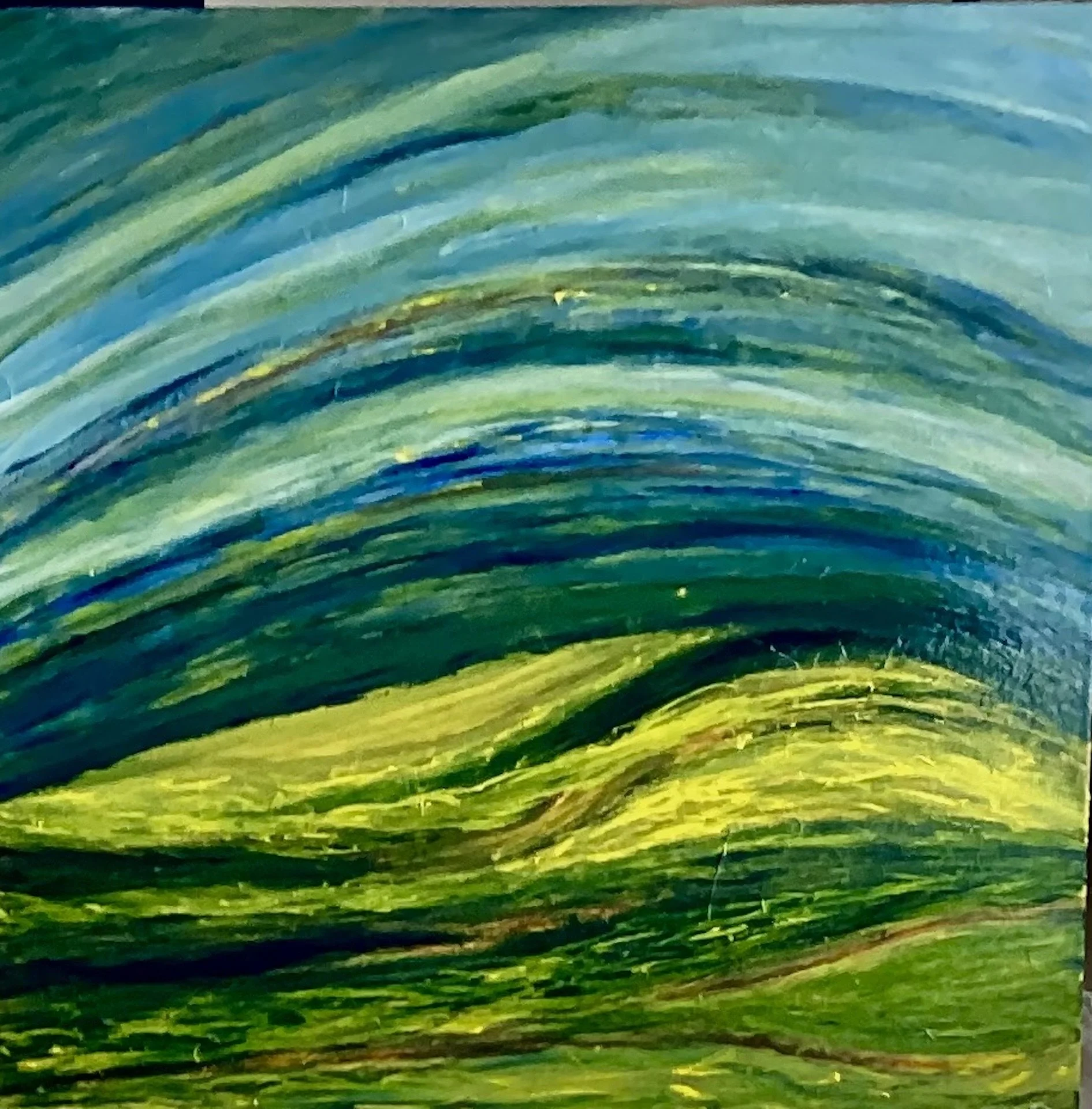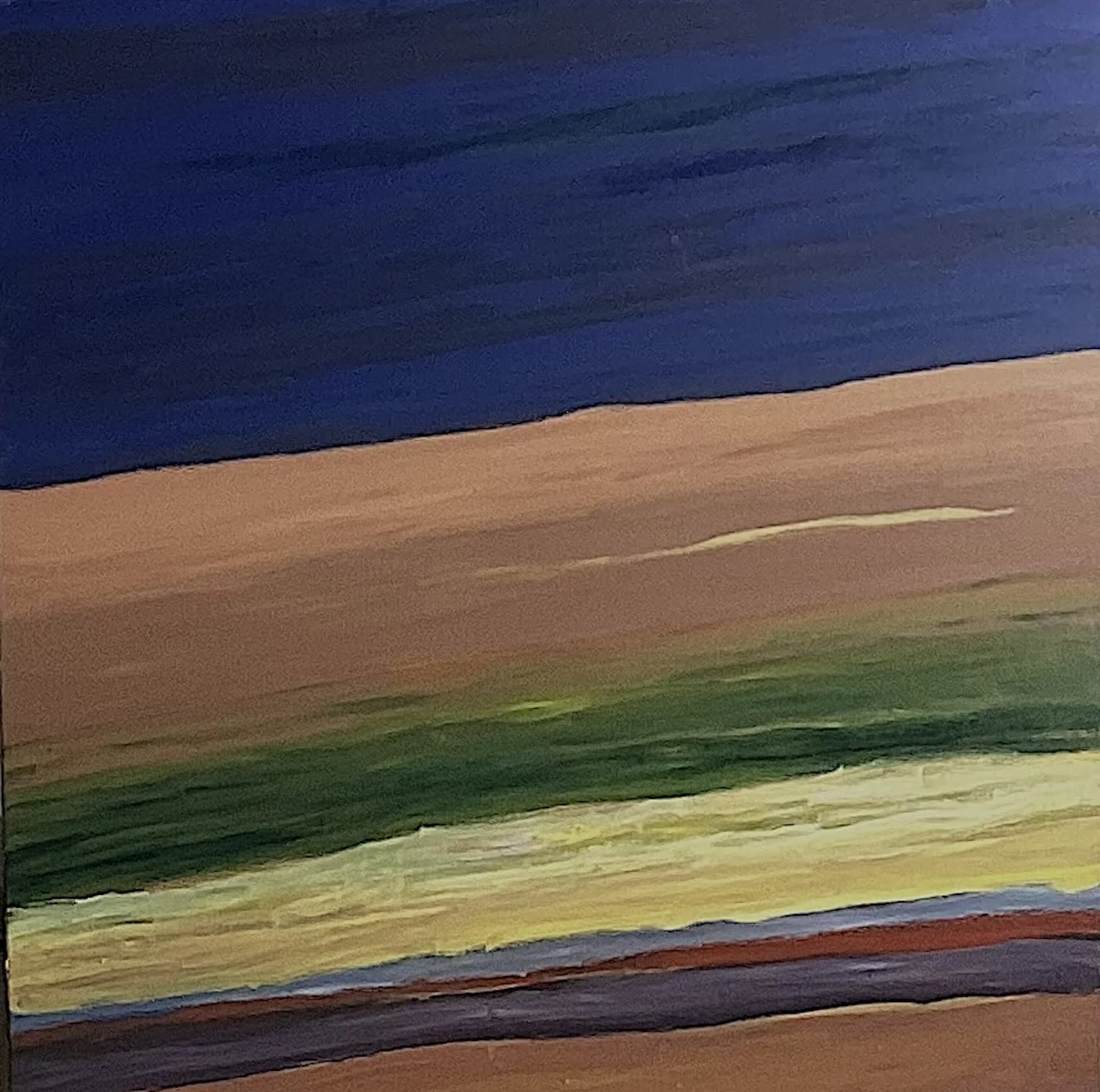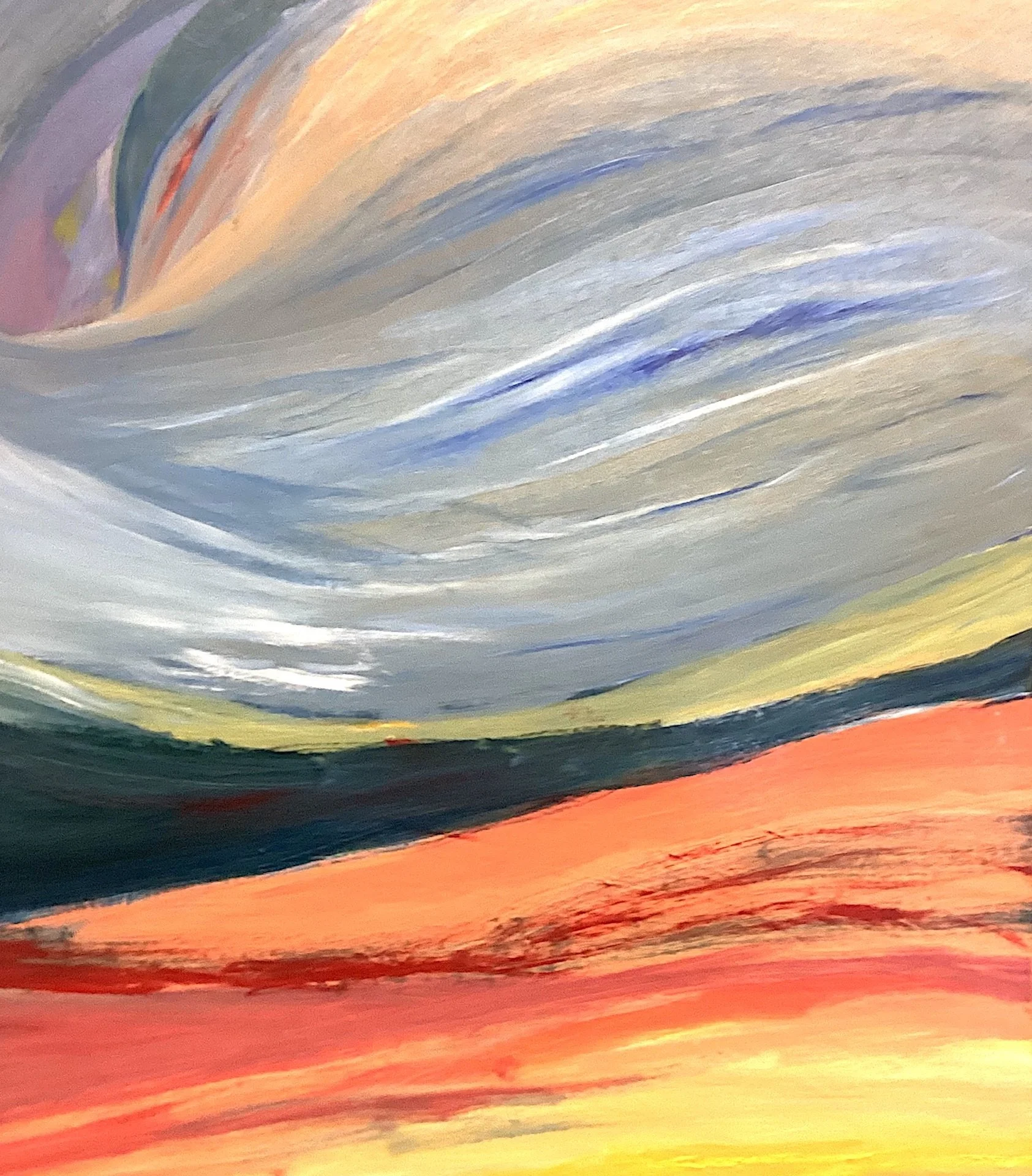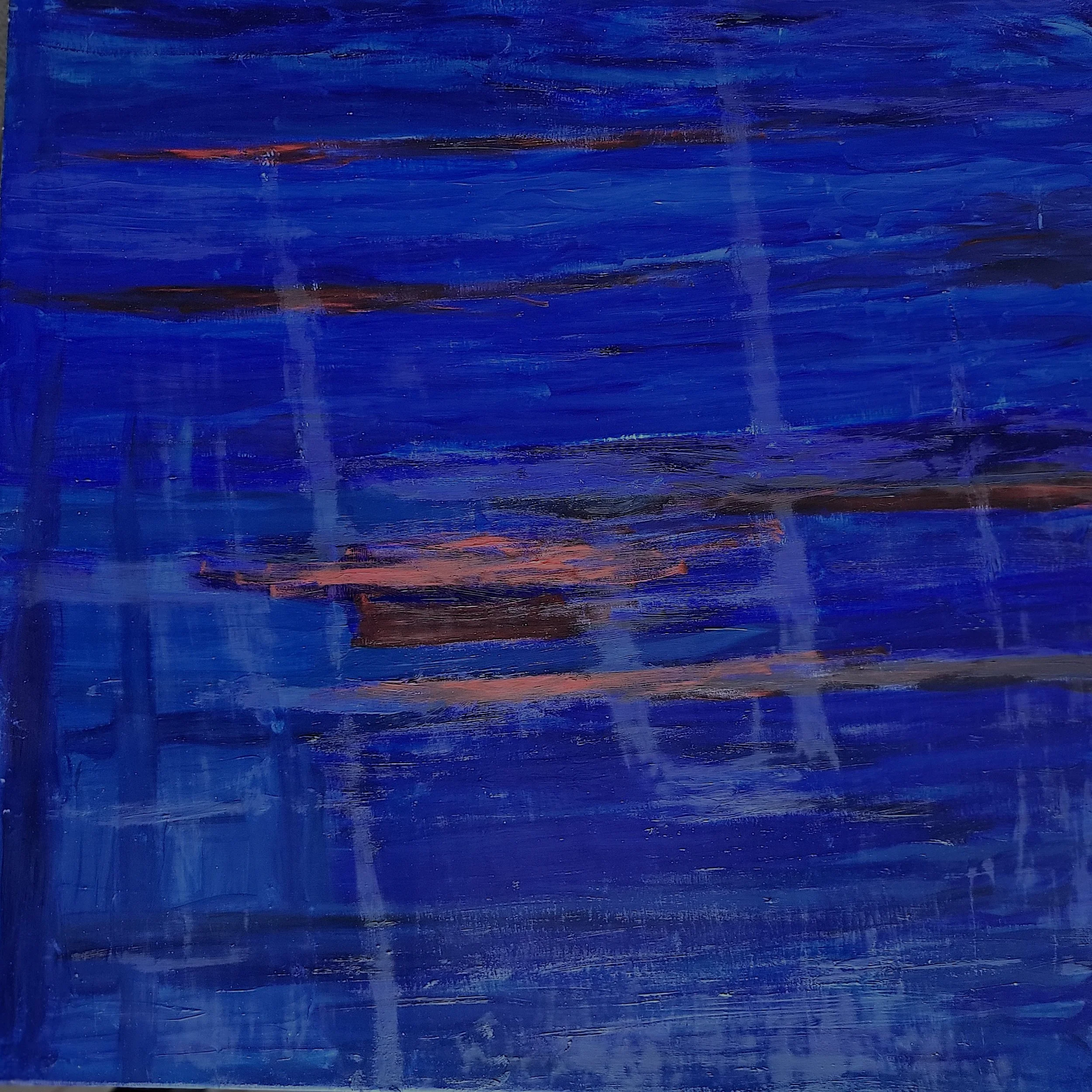Interview with David Burch
Having immersed yourself in the art scenes of Toronto, New York City, and now Edmonton, how do you perceive the influence of these distinctly different urban environments in the evolution of your color field paintings? Can you elaborate on how each city’s cultural and visual stimuli have nuanced your understanding of abstract landscapes and emotional expression in art?
Although I grew up in Edmonton, Alberta I left the province in 1967 at the age of 23 moving to Toronto where I lived until 1995 when I was offered a professorship at Columbia University and then lived in NYC until 2007 thus most of my adult life was spent in large urban environments. I only started to paint at the Art Students League of NYC (ASL) in the late 1990s having been given a set of beginner art supplies by an appreciative house guest who was a cousin and a painter having attained a MFA at the University of Alberta, The very instant the brush with oil paint hit the tiny canvas board I was hooked for life. Having said that living in an extremely urban environment influenced in many ways what I chose to paint where my colourfield paintings were just that - colourfield paintings with little reference to abstract landscapes. Once I moved back to Alberta I was once again living in Big Sky county (very much like the sky in the State of Montana in the USA) and all that sky told me I had to paint it together with the land it overlooked.
Reflecting on your time under Ronnie Landfield’s mentorship at the Art Students League of NYC, could you discuss the specific aspects of his teaching that resonated most with you? How did his perspective on abstract impressionism help in refining your techniques and what philosophies of his do you find echoing in your work even today?
Ronnie’s primary focus in teaching at the ASL was first and foremost ensuring that each student was completely free to paint whatever he or she wanted to paint. Most of his classes had a male or female model so some students painted the model and many others including myself painted what we wanted to paint. Ronnie quickly recognized that I had a passion for colour and he often encouraged me to paint pure colour but doing so I ended up with a somewhat recognized “scape” made up of many colours many of which he suggested.
You have described a significant shift in your approach to brushwork and composition that focuses more on the nuances of color and form. What were the pivotal moments or experiences that prompted this shift? How do you assess the impact of this transformation on the way you now conceptualize and execute your paintings?
Having painted with lots of colour where colour was the paintings’ focus I made the decision consciously or not to explore painting reality - whether that reality was for real or imagined.
As someone who navigates the complexities of bipolar disorder and past alcoholism, how do these aspects of your personal life influence your artistic decisions, particularly in the choice of colors, themes, or the intensity of brush strokes? Could you share how your emotional states have sculpted your creative outputs over the years?
I was diagnosed as having chronic bi-polar depression in the late 1990s by the psychiatric team at Mount Sinai Hospital in NYC after an extremely traumatic shift in mood and action which necessitated hospitalization. Post diagnosis I have continuously been seen by psychiatrists in New York and in Edmonton to the present time. Alas this kind of depression really never goes away completely even with medication and since moving back to Alberta in 2007 I have successfully undergone ECT treatments which in the long run guard against the depression but do not in fact “cure” it. However I am the first to recognize that the very act of applying very colourful oil paint and/or acrylics to canvases is for me personally an important tool in my fight with this kind of depression. In order to understand what I am saying I have been told both by psychiatrists and many people who have seen my work that the viewer would be very surprised to learn that the painter of these paintings suffers from bi-polar depression.
Your paintings often carry evocative titles that serve as a prelude to the narrative within the canvas. Can you delve into your process for selecting these titles and discuss how they enhance the interactive experience between the viewer and the artwork? What role do you believe these titles play in setting the interpretive framework for your pieces?
I think that the titles of most of my abstract paintings “nudge” the viewer or at least gives him or her the opportunity to see my work and the world in which we as humans live from different perspectives, This most definitely does NOT however preclude any other interpretation of my work that the viewers may or may not have.
Transitioning from a career in epidemiology to full-time painting, in what ways has your scientific training influenced your approach to organizing, planning, and executing a new artwork? Does your methodological background inform your artistic experiments, and if so, how?
I did not transition from epidemiology to full time painting.. I started to and continued painting while I was engaged in full time employment as an epidemiologist at Columbia University and became a full time painter after retiring.. I do however think it important to acknowledge the major influence of the extensive travel throughout the former Soviet Union as I was part of a team at Columbia University studying selected cancer outcomes due to the Chernobyl Nuclear accident and that travel enabled me to view the art in Ukraine, Belarus and Russia that of course was not seen by most in the West.
Being an openly gay man and coming out during the politically and socially tumultuous 1960s, how has your identity influenced the themes you choose to explore in your art? How do you think your personal journey within the LGBTQ+ community has shaped the messages you wish to convey through your paintings?
I am most definitely NOT one of those gay men who often think that because they are homosexual they see the world differently than heterosexuals so being gay has absolutely no impact on my art work.You attribute your sobriety to providing a renewed focus in your life and art
You attribute your sobriety to providing a renewed focus in your life and art. Could you discuss the challenges and revelations brought on by sobriety, particularly in relation to your creative process? How has this change influenced your productivity and the thematic depth of your work?
I quit drinking in 1991 which was four years prior to leaving Toronto for New York and for that reason this question has no meaning. If I had not quit drinking Columbia University would not have offered me the position, I would not have moved to NYC, I would not have begun to paint and finally I would most likely be dead and not able to answer these questions.
ANCESTRY, 2012, acrylic on canvas 91.44 x 91.44 x 5.08.
INFINITY, 2012, acrylic on canvas, 91.44 x 91.44 x 5.08
DOORS, 2010, acrylic on canvas, 91.44 x 91.44 x 5.08
SAILORS' DELIGHT, 2024, oil on canvas, 91.44 x 91.44 x 5.08
MIDNIGHT AT THE OASIS, 2024, oil on canvas, 91.44 x 91.44 x 5.08
FLOATING, 2010, acrylic on canvas, 91.44 x 91.44 x 5.08
SHIPWRECK, 2013, acrylic on canvas, 91.44 x 91.44 x 5.08
RED HOT ANTIQUITY, 2023, oil on canvas, 76.2 x 76.2 x 5.08
HELTER SKELTER, 2023, oil on canvas, 101.6 x 101.6 x 5.08
BY THE DAWN'S EARLY LIGHT, 2023, oil on canvas, 76.2 x 101.6 x 5.08
AFTER THE STORM, 2023, oil on canvas, 91.44 x 91.44 x 5.08
NIGHT TIME AT THE OASIS, 2024, oil on canvas, 76.2 x 76.2 x 7.62
PRAIRIE STORM, 2022, oil on canvas, 60.96 x 91.44 x 5.08
BLUELINES, 2024, oil on canvas, 101.6 by 101.6 x 5.08
BIG SKY COUNTRY, 2008, oil on canvas, 60,96 x 91.44 x 5.08



